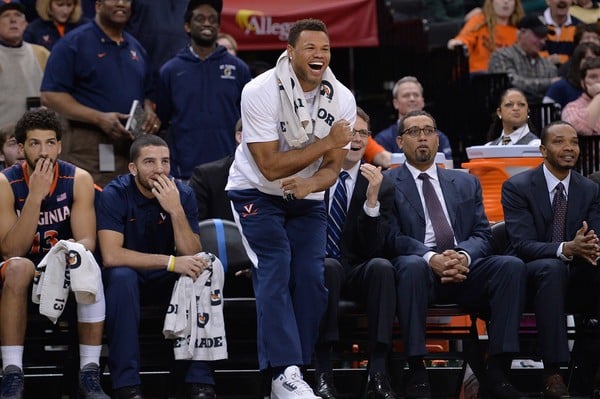Well, what do you know, it’s that time of the year again. It’s the time when college basketball takes over our lives, grabs our attention for a whole month, and prompts us to join this little game called the March Madness Bracket pool. To help you fill out your brackets, we’ve listed down five best practices in penciling in your selections.
We also have tips on how to spot a March Madness sleeper. You can click here for that piece.
[sc:MarchMadness ]Five Tips on How to Pick a March Madness Bracket
1. Look for the upsets
[sc:NCAAB240banner ]The Big Dance won’t be complete without the Cinderellas. And that’s why you should be on the lookout for the next Florida Gulf State, George Mason, Butler, Norfolk State, or Dayton—teams that busted millions of brackets in the past.
However, finding Cinderella teams aren’t that easy and it takes a combination of research and luck to pick them correctly. That being said, there have been numerous trends to help us determine which team the glass slipper will fit next. Here are some of them:
- No. 1 seed vs. No. 16 seed – The No. 1 seed has won 100% of its matchups against the No. 16 seed.
- No. 2 seed vs. No. 15 seed – The No. 2 seed has won 96% of its matchups against the No. 15 seed.
- No. 3 seed vs. No. 14 seed – The No. 3 seed has won 85% of its matchups against the No. 14 seed.
- No. 4 seed vs. No. 13 seed – The No. 4 seed has won 79% of its matchups against the No. 13 seed.
- No. 5 seed vs. No. 12 seed– The No. 5 seed has won 67% of its matchups against the No. 12 seed.
- No. 6 seed vs. No. 11 seed– The No. 6 seed has won 67% of its matchups against the No. 11 seed.
- No. 7 seed vs. No. 10 seed– The No. 7 seed has won 60% of its matchups against the No. 10 seed.
- No. 8 seed vs. No. 9 seed– The No. 8 seed has won 47% of its matchups against the No. 9 seed.
*Trends are based on tournaments from 1985-2014
2. Injuries and Suspensions

[sc:NCAAB240banner ]Learning that, say, Jahlil Okafor won’t suit up for the whole tournament after submitting your bracket with Duke as champion is a bone-chilling experience. You don’t want that to happen, right?
If a player, especially if it’s a starter, is injured or suspended, then his team may be in trouble of losing right in the very first round. A higher seeded team may get out of the first round safely even without a key player, but it can become a completely different story in the next round, where a tougher opponent awaits them. Before filling out a March Madness bracket, it’s prudent to know first which teams will come into the tournament with missing pieces in their lineups.
3. Get familiar with the scoring system
March Madness Bracket pools differ in determining its winner. Others simply give you a point per correct prediction, while some multiply winning teams’ seeds with the number of rounds won. Knowing the scoring system can be a very big help in making decisions, especially in the later rounds where the competition is at its toughest.
4. Listen to the Bookmakers
Even if you’re not into betting, checking out the spreads of first round games matters. One of the toughest matchups to predict is the opening round games between the No. 8 and No. 9 seeds. Bookmakers will sometime install a No. 9 seed as the favored team in this matchup, which should give you an idea that a mild upset may be imminent. This could also happen in No. 10 vs. No. 7 matchups, where the lower-seeded team is actually favored to win.
5. RPI, BPI, and KenPom are your best friends
We often hear the term RPI (Rating Percentage Index), which is the most preferred metric system by the selection committee when it comes to seeding teams. What it does is it ranks all teams according to its strength of schedule and their performance against those teams on their schedule. By looking at a team’s RPI, you’d get a much clearer picture of how well (or bad) teams played against elite competition.
Another tool you shouldn’t miss is the KenPom ratings. It is established by Ken Pomeroy, who uses a ton of advanced formulas to determine every college basketball team’s offensive and defensive efficiency—among others—adjusted to the pace of play.
Lastly, we have the BPI (Basketball Power Index). Developed by the folks from ESPN in 2012, BPI also uses advance statistics to determine its own rankings. It factors in teams’ performance against the schedule (just like RPI) and pace of play (same with KenPom), but unlike RPI or KenPom, it includes other details like games won or lost against teams with missing star players in its equation.
Writer’s Prediction
The selection committee is yet to assemble, but that won’t stop this writer from laying out his fearless forecasts:
Final Four: Kentucky, Wisconsin, Arizona, Iowa State
Champion: Kentucky
[sc:NCAAB490Banner ]1,892 total views, 1 views today







